Every year Claudia and I photograph migratory birds wintering in California’s Central Valley. It’s a world of constant motion, with groups of birds taking off, landing, moving from fields to ponds (and back), skimming over marshes, or probing the water for food.
It’s that motion that we find so captivating, and it’s that motion that’s so challenging to photograph. It takes lots of practice to learn how to follow birds in flight, keep them in focus, adjust exposures on the fly, zoom in and out as needed, and make instant decisions about composition.
It probably goes without saying that there are a lot more misses than hits with this type of photography. So many elements have to come together in a split second: focus, exposure, composition, light, and – often the most important part – the arrangement, poses, and wing positions of the birds.
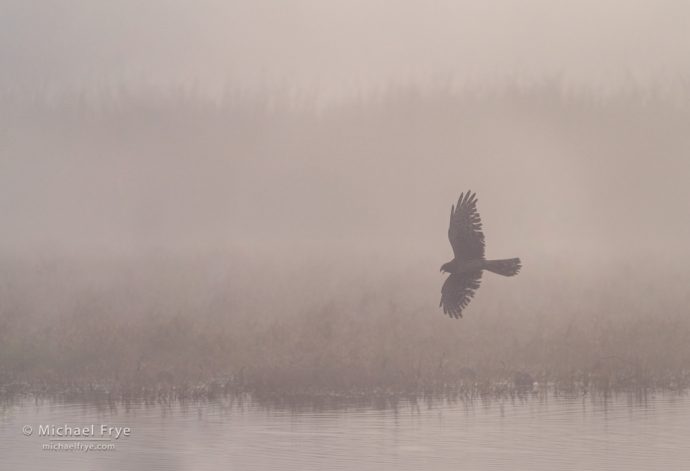
Northern harrier flying over a marsh in the fog, San Joaquin Valley, California. 400mm, 1/1000 sec. at f/8, ISO 640.
Ideally, I’d like to infuse these still photographs with the sense of motion – and commotion – that I experience watching these birds. Sometimes I’ll use a fast shutter speed to try and preserve an instant in time; at other times I’ll use a slow shutter speed, which softens and blurs the photograph, and often conveys a feeling of motion better than a frozen image.
Those slow-shutter-speed images are even more challenging to capture. They need to have some blur, but also have sharp areas so that viewer’s eyes have something to latch onto. Usually I’m panning, trying to match the motion of the camera to the speed and direction of flying birds. If I’m photographing a flock, I’ll pick one individual in the center of the frame and try to keep it in the center while I pan.
Most of the time I don’t get this quite right, and the birds are too blurred, But I’ve increased my success rate by attaching a cheap video head to my tripod, which allows me to pan more smoothly. I always use 1/15th of a second for these panned images. That seems to be just right: slow enough to make the wings blur, but fast enough to give myself a decent chance of getting some of the bird’s bodies sharp – or at least reasonably sharp.
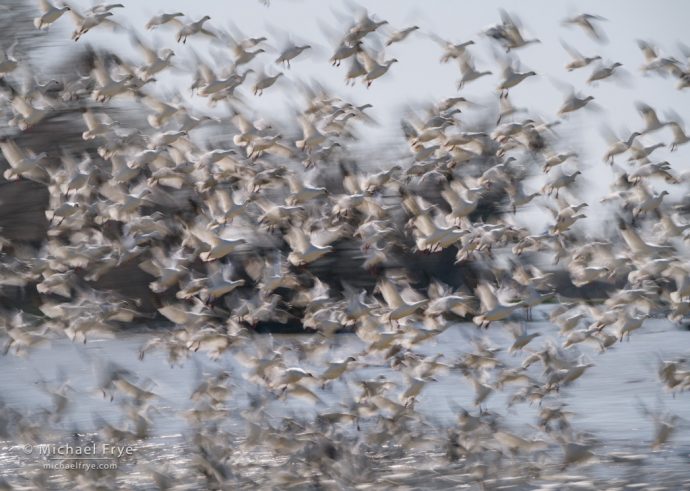
Ross’s geese taking flight, San Joaquin Valley, California. 336mm, 1/15 sec. at f/16, ISO 100, ND filter.
Fast shutter speed or slow, it takes a special set of circumstances to make photographs that convey the kind of mood and feeling I’m looking for. But I like a challenge; that’s part of the fun.
And there are those rare moments when serendipity strikes: when the light, weather, setting, and birds collaborate to create a beautiful moment – one that couldn’t be predicted, but materializes suddenly in front of me. The scarcity of those moments makes them all the more satisfying when they occur.
— Michael Frye
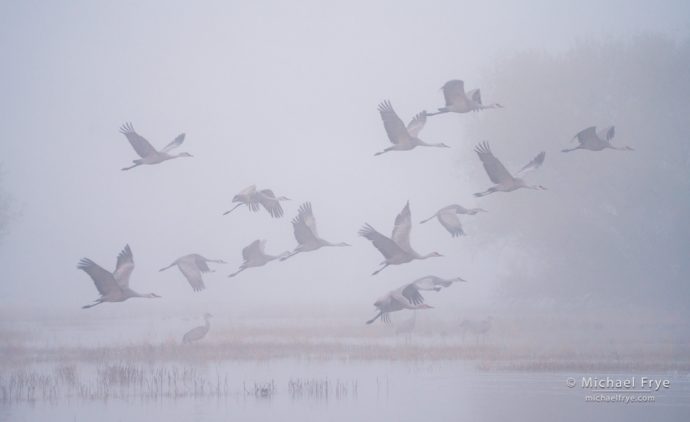
Sandhill cranes taking flight, San Joaquin Valley, California. 291mm, 1/500 sec. at f/5.6, ISO 2000.
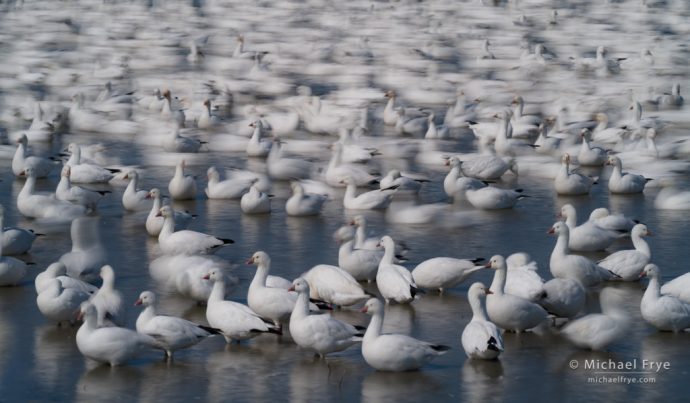
Ross’s geese, San Joaquin Valley, California. 194mm, 1 second at f/16, ISO 80, ND filter, tripod (braced against the door in my car).
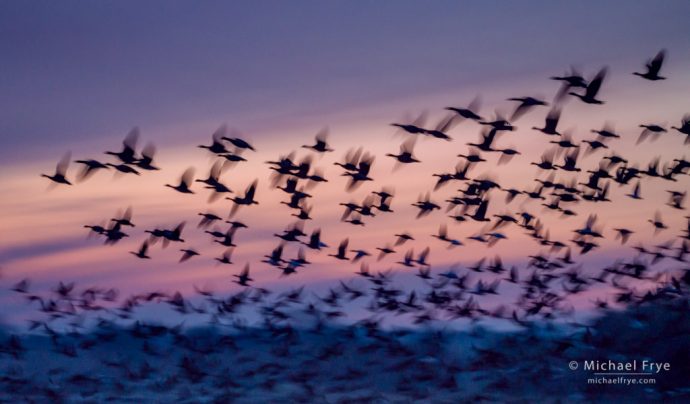
Aleutian cackling geese at sunset, San Joaquin Valley, California. 177mm, 1/15 sec. at f/5.6, ISO 4000.
P.S. You can see more wildlife images from my portfolio here.
Related Posts: It’s All About the Light; Telling a Visual Story; Gesture in Nature Photography
Michael Frye is a professional photographer specializing in landscapes and nature. He is the author or principal photographer of The Photographer’s Guide to Yosemite, Yosemite Meditations, Yosemite Meditations for Women, Yosemite Meditations for Adventurers, and Digital Landscape Photography: In the Footsteps of Ansel Adams and the Great Masters. He has also written three eBooks: Light & Land: Landscapes in the Digital Darkroom, Exposure for Outdoor Photography, and Landscapes in Lightroom: The Essential Step-by-Step Guide. Michael has written numerous magazine articles on the art and technique of photography, and his images have been published in over thirty countries around the world. Michael has lived either in or near Yosemite National Park since 1983, currently residing just outside the park in Mariposa, California.

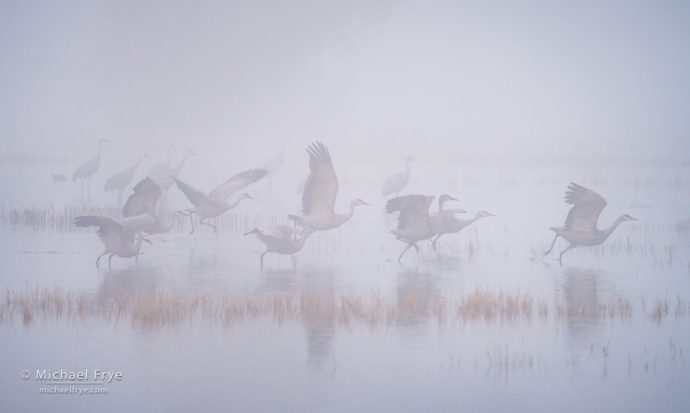
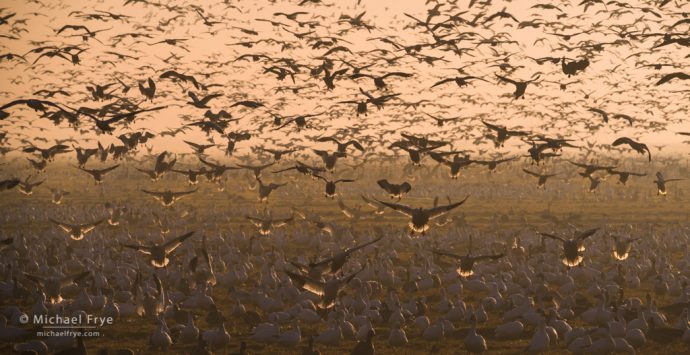
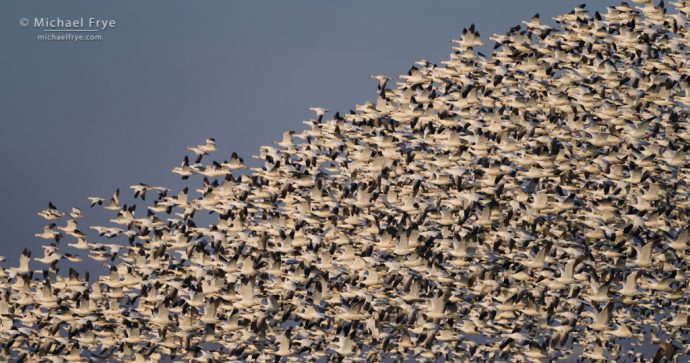
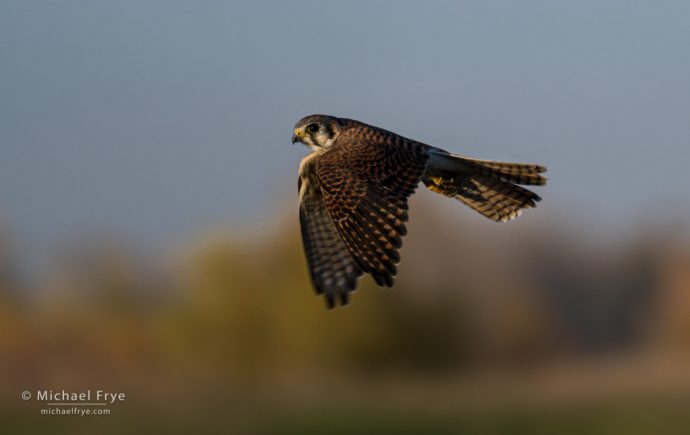








Great group of photos Michael. What area of the San Joaquin Valley did you photograph these birds? I usually photograph the Sandhill Cranes, Canadian Snow Geese, Hawks and other birds in the Bosque del Apache NM area. It would save me a long drive to NM eery year!!
Have a. great New Year.
Thanks Kearnes! As a general rule, I don’t share specific locations for my photos unless the location is well-known and obvious. I’d suggest checking out Sacramento, Colusa, San Luis, and Merced national wildlife refuges, and Gray Lodge State Wildlife Area.
Thanks Michael… I’check the above… I apprecciate the info… Have you been to theBosque del Apache in New Mexico? A photographers paradise!